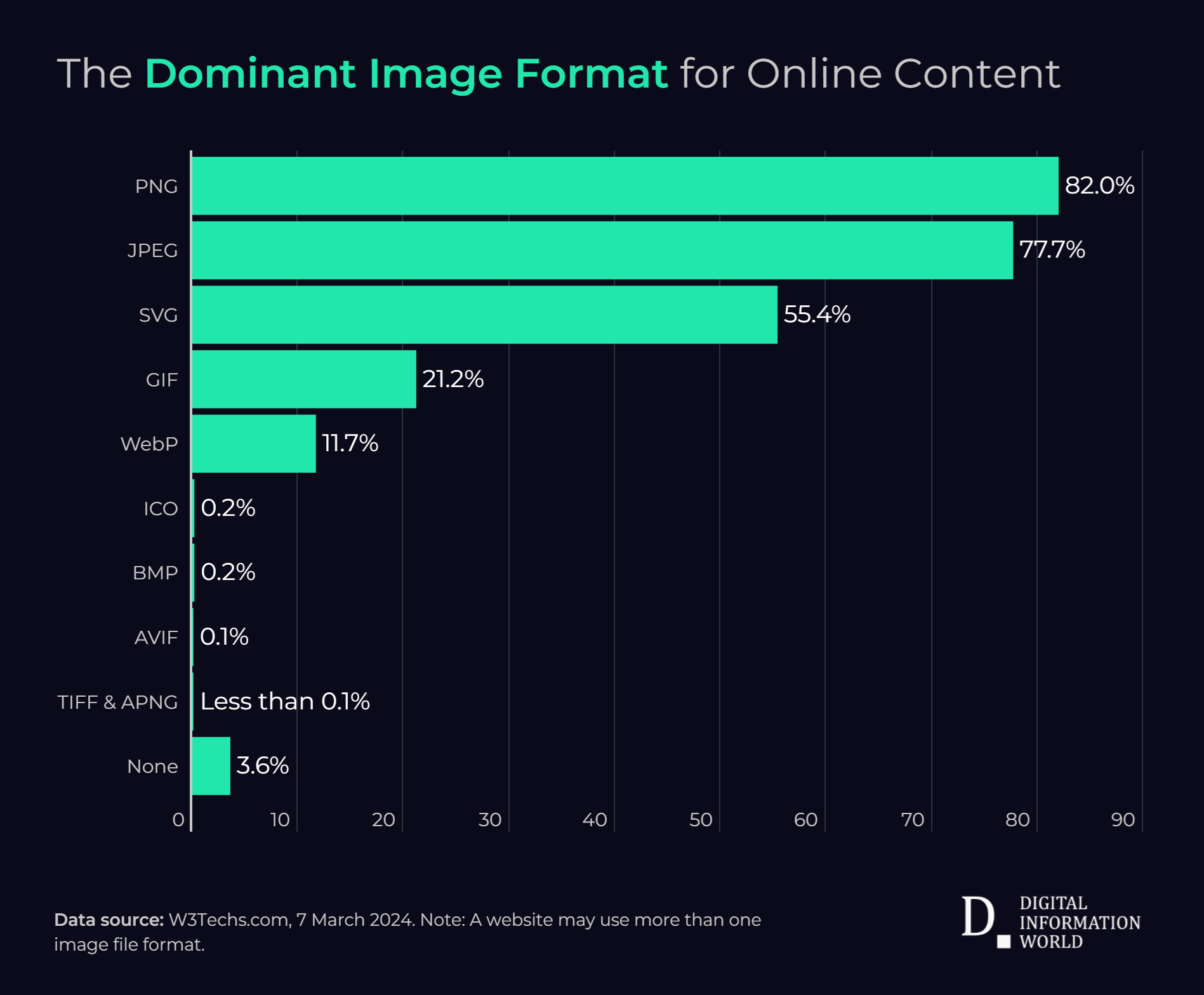It is important to note that the PNG file format wins out with 82% of websites using it. In spite of the fact that this is the case, it’s by no means the only file format that saw such a wide level of adoption.
Many websites are using JPEGs because of the fact that this is the sort of thing that could potentially end up reducing loading times. JPEGs (or JPG) are smaller and can be compressed more efficiently than might have been the case otherwise, which is they 77.7% of websites are using them at this current point in time (but you know JPG images look too crappy, when overly compressed).
Fun fact: This chart ^ is in the PNG image format, ;)
However, any web developer reading this would know that these are old school file formats. What about those next gen formats that are purported to be the way of the future? These formats are WebP and AVIF, and the surprising thing is that they are not all that widely used! WebP is used in 11.7% of websites, but AVIF is only used in 0.1%.
- Related: Unlock our blazing-fast Image Format Converter for seamless PNG to JPG, PNG to WebP, and vice versa conversions!
At the end of the day, these image formats are the most widely used on the internet, and other formats like ICO, BMP, TIFF and APNG were used by 0.2% or fewer. It will be interesting to watch as WebP and AVIF formats potentially become more widespread down the line, since they are supposedly the next step in image format evolution.
| Image Format | Percentage of Websites |
|---|---|
| PNG | 82.0% |
| JPEG | 77.7% |
| SVG | 55.4% |
| GIF | 21.2% |
| WebP | 11.7% |
| ICO | 0.2% |
| BMP | 0.2% |
| AVIF | 0.1% |
| TIFF and APNG | Less than 0.1% |
| None | 3.6% |
Data source: W3Techs, 7 March 2024. Note: A website may use more than one image file format.
Read next: Microsoft Embraces Google's Privacy Approach for Advertising
Also try our PDF document to PNG file converter to save your time on quick format switching.
by Zia Muhammad via Digital Information World

No comments:
Post a Comment